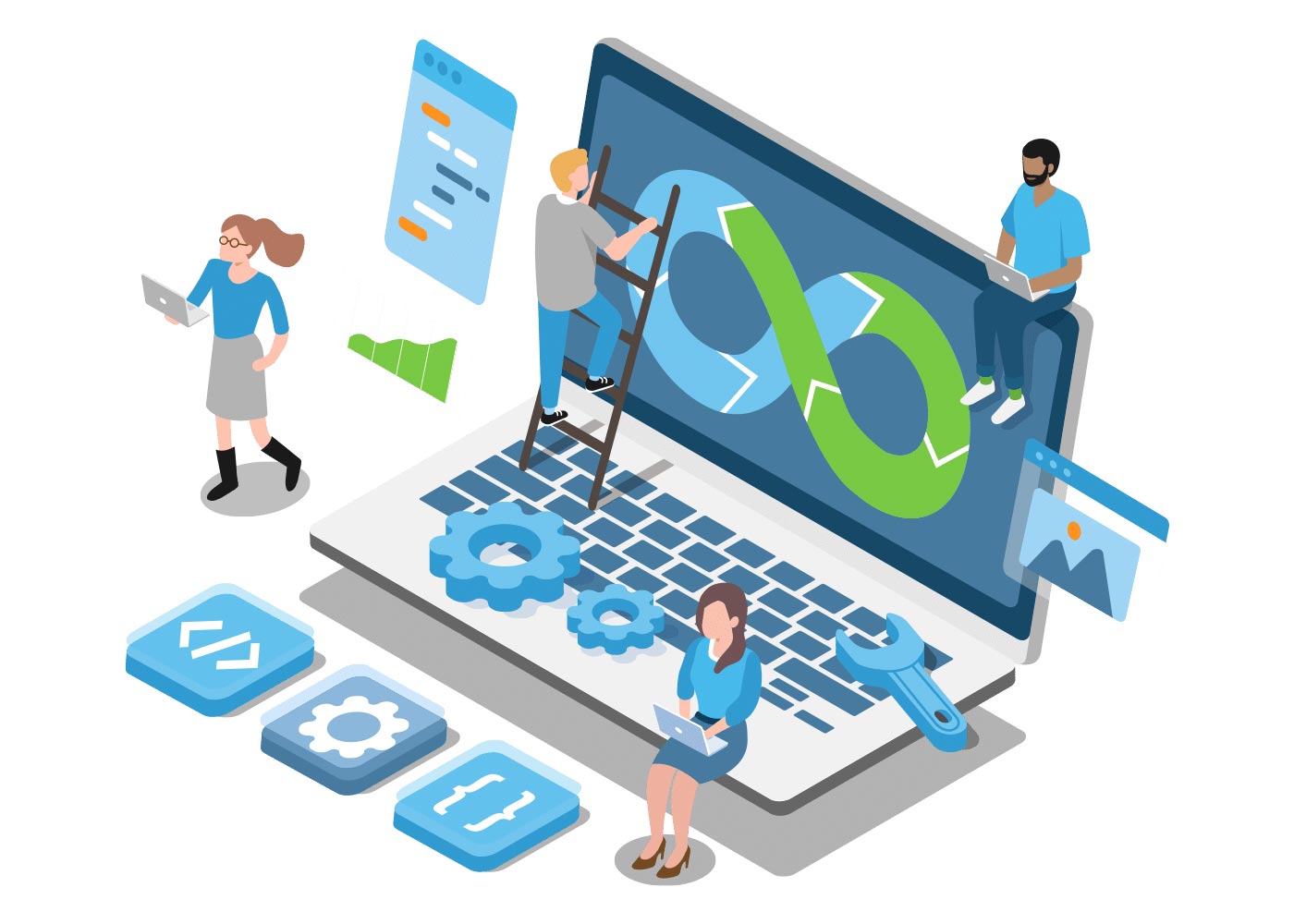Software development is an ever-evolving field, constantly
adapting to new technologies and innovations. As we look ahead to 2023 and
beyond, the landscape of software development is set to undergo significant transformations.
This article explores the key trends that will shape the future of software
development and provides insights into how these trends will impact developers,
businesses, and end-users alike. From the integration of artificial
intelligence and machine learning to the rise of low-code and no-code
development platforms, from the increasing importance of cybersecurity to the
emergence of quantum computing, we delve into the exciting developments that
will define software development in the coming years. Whether you are a
software developer, technology enthusiast, or business leader, understanding
these trends is crucial for staying ahead in the rapidly evolving world of
software development.
1. Artificial Intelligence and Machine Learning in Software
Development
1.1 The Role of AI and ML in Software Development
Artificial Intelligence (AI) and Machine Learning (ML) are
revolutionizing the software development landscape. AI algorithms can analyze
vast amounts of data and make intelligent predictions, while ML algorithms can
learn from patterns and improve their performance over time. In software
development, AI and ML can be used to automate repetitive tasks, optimize code,
and enhance user experience.
1.2 Automating Code Generation with AI
One of the most exciting applications of AI in software
development is automating code generation. AI-powered tools can understand user
requirements and generate code snippets, reducing the time and effort required
to write code from scratch. This not only speeds up the development process but
also helps developers focus on more crucial and creative aspects of their work.
1.3 Enhancing Software Testing and Debugging with ML
Machine Learning is also making software testing and
debugging more efficient. ML algorithms can analyze code repositories, identify
common bugs, and suggest fixes. By learning from previous testing experiences,
ML algorithms can predict potential issues and help developers write more
robust and reliable code. This not only saves time but also improves the
overall quality of software.
2. The Rise of Low-Code and No-Code Development Platforms
2.1 Understanding Low-Code and No-Code Development
Low-Code and No-Code development platforms are democratizing
software development by enabling users with little or no coding experience to
build applications. These platforms provide visual interfaces, pre-built
components, and drag-and-drop functionality, allowing users to create software
applications quickly and easily. This opens up opportunities for non-technical
users to participate in the development process.
2.2 Benefits and Challenges of Low-Code/No-Code Platforms
The benefits of Low-Code and No-Code platforms are evident “
faster development time, reduced reliance on traditional software engineers,
and increased agility. However, there are challenges to consider, such as
limitations on customization and scalability. Non-technical users may find it
challenging to meet complex requirements or integrate with external systems.
Nonetheless, these platforms are evolving rapidly, addressing these challenges
to make software development accessible to a broader audience.
2.3 Real-World Examples and Success Stories
Low-Code and No-Code development platforms have already
empowered individuals and organizations to create innovative solutions. From
entrepreneurs building custom web applications to business analysts streamlining
internal processes, there are numerous success stories. Companies like
OutSystems, Mendix, and Bubble have enabled users to turn their ideas into
fully-functional applications without extensive coding knowledge.
3. Embracing DevOps and Continuous Integration/Continuous
Delivery (CI/CD)
3.1 Overview of DevOps and CI/CD
DevOps and Continuous Integration/Continuous Delivery
(CI/CD) practices are becoming increasingly important in software development.
DevOps focuses on collaboration between development and operations teams to
improve agility and deliver software more rapidly. CI/CD is an approach that
emphasizes frequent integration and deployment of code changes, reducing the
time between development and production.
3.2 Implementing Agile Development with CI/CD
CI/CD techniques enable software teams to adopt Agile
methodologies effectively. By automating build, test, and deployment processes,
developers can quickly iterate on their code and receive immediate feedback.
This allows for faster development cycles and early detection of issues,
resulting in better software quality and shorter time to market.
3.3 Tools and Best Practices for Successful DevOps
Implementation
To implement DevOps and CI/CD successfully, teams should
invest in appropriate tools and follow best practices. Version control systems
like Git, continuous integration servers like Jenkins, and containerization
technologies like Docker are widely used in the DevOps ecosystem. Additionally,
teams should embrace infrastructure as code, automate testing, and prioritize
cross-functional collaboration for seamless integration and delivery.
4. Blockchain Integration and its Impact on Software
Development
4.1 Understanding Blockchain Technology
Blockchain technology, initially popularized by
cryptocurrencies, is finding its way into various industries, including
software development. A blockchain is a decentralized and distributed ledger
that records transactions across multiple computers, ensuring transparency,
security, and immutability. By eliminating intermediaries and enabling
trustless interactions, blockchain has the potential to transform software
development.
4.2 Benefits of Blockchain Integration in Software
Development
Integrating blockchain in software development brings
several benefits. Smart contracts, which are self-executing agreements stored
on the blockchain, enable secure and automated transactions. Blockchain's
decentralized nature enhances data security and privacy, reducing the risk of
hacks or unauthorized access. Additionally, blockchain can improve supply chain
management, digital identity verification, and intellectual property
protection.
4.3 Use Cases and Examples of Blockchain in Software
Development
Blockchain is already being utilized in various software
development applications. For example, blockchain-based voting systems ensure
transparency and eliminate voter fraud. Decentralized applications (dApps)
leverage blockchain's distributed nature to provide secure and
censorship-resistant services. Supply chain management platforms use blockchain
to track and verify the origin and authenticity of products. These examples
highlight the diverse potential of blockchain integration in software
development.
As software development continues to evolve, embracing
trends like AI and ML, Low-Code/No-Code platforms, DevOps, CI/CD, and
blockchain integration will be crucial for developers and organizations to stay
ahead and drive innovation in the digital era.
5. Exploring Progressive Web Applications and Cross-Platform
Development
5.1 Introduction to Progressive Web Applications (PWAs)
Picture this: you're browsing a website on your phone, and
suddenly you realize you need to switch to your laptop. But wait! The experience
is seamless because you're using a Progressive Web Application (PWA). PWAs are
web applications that combine the best of both worlds - the functionality of a
native app and the accessibility of a website. They can be accessed offline,
send push notifications, and even be installed on your home screen. Just like
magic, but with a sprinkle of technology.
5.2 Benefits and Challenges of PWAs
What makes PWAs so special? Firstly, they eliminate the need
for multiple versions of an app for different platforms. No more headaches
about developing separate applications for iOS, Android, and whatever new
platform emerges next. With PWAs, you can save time, money, and sanity.
Secondly, PWAs are fantastic for users. They load quickly,
work reliably even in poor network conditions, and can be easily shared via a
simple URL. Imagine sharing a PWA like you would a cat video - just copy and
paste that link, and voila, your friends are immersed in the same app
experience as you.
Of course, like any good superhero, PWAs have their
challenges too. Compatibility issues across different browsers can sometimes
cause headaches for developers. And let's not forget the occasional limitations
in accessing certain device features. But fear not, with proper planning and
implementation, these challenges can be tamed like a wild lion.
5.3 Cross-Platform Development Frameworks and Tools
When it comes to building PWAs and other cross-platform applications,
developers have an arsenal of frameworks and tools at their disposal. From
React Native to Flutter, Xamarin to Ionic, the choices are endless. These
frameworks allow developers to write code once and deploy it across multiple
platforms, saving valuable time and effort.
But wait, there's more! Frameworks like Electron and NW.js
enable developers to create desktop applications using web technologies. It's
like having the ability to build a house with Lego blocks - easy, modular, and
fun. With cross-platform development, the possibilities are vast, and the
future is bright.
6. The Increasing Importance of Cybersecurity in Software
Development
6.1 Understanding the Growing Security Threats
In a world where cybercrime is as common as a pigeon in the
city, cybersecurity has become paramount. With each passing day, hackers and
malicious actors are finding new ways to exploit vulnerabilities in software.
From data breaches to ransomware attacks, the threats are real, and they're
multiplying faster than rabbits during mating season.
6.2 Best Practices for Secure Software Development
To combat these cyber villains, software developers need to
gear up with the latest armor of security best practices. It starts with
writing secure code, like using proper input validation and sanitization.
Regularly updating libraries and frameworks is like getting your software
vaccinated against known vulnerabilities. And, of course, strong encryption and
authentication mechanisms are the shields that keep your data safe from prying
eyes.
Remember, nobody likes an easily crackable lock or a
password like "123456." So let's all chant the cybersecurity mantra
together: "Secure code, regular updates, and strong encryption - the holy
trinity of software protection!"
6.3 Integrating Security Testing and Vulnerability
Management
Just like how bugs can disrupt your summer picnic, security
vulnerabilities can ruin your software's reputation. That's why integrating
security testing into the software development lifecycle is crucial. Tools like
static code analyzers and penetration testing can help uncover weaknesses
before the bad guys get a whiff of them.
But it doesn't end there. A proactive approach to
vulnerability management is essential. Regular scanning, patching, and staying
up-to-date with the latest security news and patches can keep your software one
step ahead of the game. Remember, it's better to prevent an attack than to
clean up the mess afterwards.
7. The Emergence of Quantum Computing and its Potential in
Software Development
7.1 Overview of Quantum Computing
Quantum computing - the phrase that sounds like it belongs
in a sci-fi movie. But guess what? It's real, and it's here to shake up the
world of software development. Quantum computing harnesses the mind-bending
properties of quantum mechanics to perform computations on a whole new level.
Forget bits; we're diving into the world of qubits, where superposition and
entanglement rule the game.
7.2 Exploring Quantum Computing Algorithms and Applications
Quantum algorithms, like Shor's algorithm for factorization
and Grover's algorithm for searching, can solve complex problems exponentially
faster than classical algorithms. That means unlocking new avenues for
optimization, cryptography, and simulations that were previously unimaginable.
From predicting the behavior of molecules to optimizing
supply chains and tackling complex optimization problems, quantum computing
holds immense potential. It's like having a supercomputer on steroids, capable
of cracking some of the toughest nuts in the digital universe.
7.3 How Quantum Computing can Impact Software Development
As quantum computing continues to evolve, it will
undoubtedly disrupt the world of software development. From developing quantum
algorithms to running simulations on quantum computers, developers will need to
adapt their skills and knowledge to this new era.
But fear not, fellow developers! The quantum realm may seem
daunting, but it also presents exciting new opportunities for innovation. Just
like how we transitioned from punch cards to object-oriented programming, we
can embrace the quantum revolution with open arms (and maybe a little bit of
awe). Who knows what wonders we'll create when we combine the powers of quantum
and classical computing? Together, we can boldly code where no developer has coded
before!In conclusion, the future of software development holds immense promise
and transformation. With advancements in artificial intelligence, low-code
development platforms, DevOps practices, blockchain integration, progressive
web applications, cybersecurity, and the potential of quantum computing,
developers and businesses have a wealth of opportunities to explore and
leverage. By staying informed and proactive in adopting these trends, software
professionals can shape the future of technology and drive innovation in their
respective fields. As we move into 2023 and beyond, the possibilities for
software development are limitless, and the stage is set for exciting
transformations that will reshape industries and society as a whole.
Frequently Asked Questions (FAQ)
1. What is the significance of artificial intelligence and
machine learning in software development?
Artificial intelligence (AI) and machine learning (ML) have
tremendous potential in software development. AI can automate code generation
and enhance software testing and debugging processes. ML algorithms can analyze
vast amounts of data to uncover patterns and insights, improving the efficiency
and effectiveness of software development.
2. How do low-code and no-code development platforms impact
the software development landscape?
Low-code and no-code development platforms empower
individuals with limited coding experience to create software applications.
These platforms provide visual interfaces and pre-built modules, allowing for
faster development cycles and reducing the reliance on traditional coding. They
enable a wider range of users to contribute to software development and
accelerate the delivery of applications.
3. Why is cybersecurity becoming increasingly important in
software development?
Cybersecurity is gaining prominence due to the growing
number of cyber threats and data breaches. As software plays an essential role
in almost every aspect of our lives, ensuring the security of software
applications is crucial. By incorporating robust security practices during
software development, such as secure coding, vulnerability testing, and threat
modeling, developers can mitigate risks and protect sensitive data.
4. How can quantum computing impact the future of software
development?
Quantum computing has the potential to revolutionize
software development by solving complex problems that are currently beyond the
capabilities of classical computers. Quantum algorithms can enhance
optimization, simulation, and cryptography, enabling the development of more
advanced and sophisticated software applications. However, quantum computing is
still in its early stages, and its widespread adoption in software development
is yet to be fully realized.
If you wish to contribute to our blog, please email us on morhadotsan@gmail.com.



















